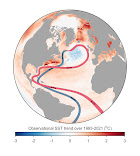What are the risks of a low pressure system in the South Atlantic causing a coastal surge in the Indian Ocean?
Coastal waves are a major natural hazard that can have a devastating impact on coastal communities. These surges are caused by a combination of factors, including strong winds, low atmospheric pressure and high tides. When these factors combine together, they can cause a wall of water to surge inland, flooding coastal areas and causing extensive damage.
One factor that can contribute to coastal waves is a low pressure system in the South Atlantic. These systems can create strong winds that blow toward the Indian Ocean, raising sea levels and increasing the risk of disturbances.
Risks of a low pressure system in the South Atlantic causing a coastal wave in the Indian Ocean:
There are a number of risks associated with a low pressure system in the South Atlantic causing a coastal surge in the Indian Ocean. These risks include:
Flooding: Coastal waves can cause widespread flooding that can damage homes, businesses, and infrastructure. Flooding can also be dangerous and even deadly.
Erosion: Coastal waves can cause beach and shoreline erosion. This erosion can lead to property loss and can make coastal areas more vulnerable to future storms.
Saltwater intrusion: Coastal waves can push saltwater inland, contaminating freshwater sources and damaging crops.
Economic Damage: Coastal waves can cause significant economic damage as businesses are forced to close and infrastructure is damaged.
How to prepare for a coastal wave:
There are a few things you can do to prepare for an onshore wave. They include:
Developing a warning system: A warning system can give people time to evacuate to a safe place before the wave starts.
Construction of seawalls and other protective structures: Seawalls and other protective structures can help protect coastal areas from the effects of waves.
Relocating Vulnerable Structures: Structures that are particularly vulnerable to damage from surges, such as homes and businesses located in low-lying areas, can be moved to higher ground.
Public education: It is important to educate the public about the risks of coastal waves and how to stay safe during waves.
Coastal waves are a serious threat to coastal communities. By understanding the risks and taking steps to prepare, we can help reduce the damage caused by these events.
In addition to the above, here are some other things to keep in mind:
Specific onshore surge risks will vary depending on the location and characteristics of the low pressure system.
It is important to be aware of the latest forecasts and warnings from local authorities.
If you are in an area at risk of a coastal wave, make a plan for how you will evacuate to a safe place.
By following these tips, you can help keep yourself and your loved ones safe during a coastal surge.




Comments
Post a Comment